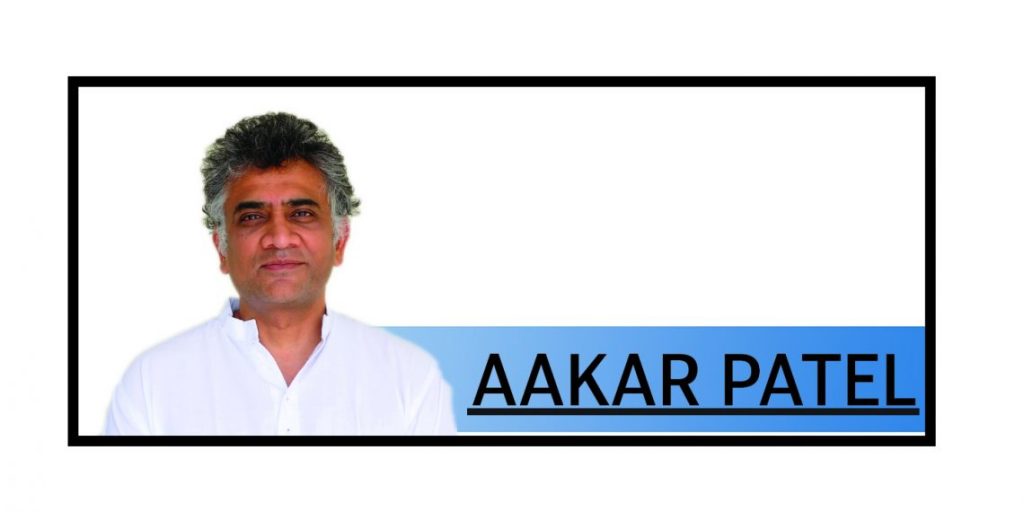When Congressman Shashi Tharoor complained in a tweet once that the BJP had merely changed the names of 23 Congress schemes, and said that Modi’s was a “name-changing” government and not a “game-changing one”, his claim was put to the test. It was found that he was right about 19 schemes. It turned out that the Pradhan Mantri Jan Dhan Yojana was the UPA’s Basic Savings Bank Deposit Account; Beti Bachao, Beti Padhao Yojana was the same as the National Girl Child Day programme; Deen Dayal Upadhyay Gram Jyoti Yojana was the Rajiv Grameen Vidyutikaran Yojana; Atal Mission for Rejuvenation and Urban Transformation was the Jawaharlal Nehru National Urban Renewal Mission renamed; the BJP’s neem-coated urea was the same as Congress’s neem-coated urea; the Soil Health Card scheme was the National Project on Management of Soil Health and Fertility; the Atal Pension Yojana was the Swavalamban Yojana; and even Modi’s flagship Make in India was merely the National Manufacturing Policy (NMP) under a new name.
And it was not mere renaming; the entire policy framework in many cases was also a copy-paste job, as a comparison of the Department for Promotion of Industry and Internal Trade’s Press Note (2011) and the Make in India website page on national manufacturing showed. The UPA’s NMP scheme spoke of “enhancing the share of manufacturing in GDP to 25 per cent within a decade and creating 100 million jobs.”
Make in India seeks “an increase in the share of manufacturing in the country’s GDP to 25 per cent” and to “create 100 million additional jobs by 2022 in manufacturing.” The UPA’s NMP says it will “increase manufacturing sector growth to 12-14 per cent over the medium term.” Make in India says it will “increase in manufacturing sector growth to 12–14 per cent over the medium term.” The NMP says the policy needs “creation of appropriate skill sets among the rural migrant and urban poor to make growth inclusive.” Make in India says it needs “creation of appropriate skill sets among rural migrants and the urban poor for inclusive growth.”
The UPA NMP policy says it will “increase domestic value addition and technological depth in manufacturing.” Make in India says it will “increase domestic value addition and technological depth.” In fact, the Make in India website not only reflected the Congress scheme but a broken download link also unsuccessfully directed readers to a 2011 document of the older policy.
Elsewhere, Digital India was the same as the earlier National eGovernance Plan; Skill India the same as the National Skill Development Programme; Mission Indradhanush was the Universal Immunisation Programme; and PAHAL the earlier Direct Benefits Transfer for LPG. BharatNet was the National Optic Fibre Network approved on 25 October 2011, aiming to provide broadband connectivity to all panchayats. When the Rajiv Awaas Yojana was renamed the Sardar Patel National Urban Housing Mission, it came with a claim from the then minister of Housing and Urban Poverty Alleviation, Venkaiah Naidu, that housing for all would come by 2022. A parliamentary committee, headed by Biju Janata Dal member Pinaki Mishra, asked the government how merely changing the name could accelerate implementation. This went largely unreported.
The reality is that the UPA’s schemes had anodyne and unmemorable names even though they may have had the same aims. Modi’s schemes have catchier names because he spends so much effort personally polishing coinage.
A friend observed that Modi’s schemes targeted at the wealthy had English names — Digital India, Skill India, Start-up India, Make in India — signalling aspiration. However the schemes for the poor were in Hindi — Ujjwala Yojana, Swachh Bharat Abhiyan, Beti Padhao Beti Bachao, Jan Dhan, Garib Kalyan, PM Kisan, Mudra Yojana — reflecting the branding priority.
Not as much effort on implementation though: Make in India’s target was shifted from 2022 to 2025 as manufacturing collapsed in India, and instead of going from 16 per cent in 2014 to 25 per cent in 2022 in fact dropped to 13 per cent and remaining at 13 per cent in 2023. Make in India has a nice logo though.
Tharoor’s good-natured acceptance that such things represented continuity (Manmohan Singh did not say a thing about the renaming) sat in contrast with the BJP’s contempt for the very schemes they appropriated.
Particular hostility was reserved for the UPA’s unique identity scheme, Aadhaar. During the 2014 election campaign, The Times of India ran a headline on 12 March 2014: “Aadhaar a ‘fraud’, will review it if voted to power: BJP”. The party alleged that Aadhaar was a criminal programme and that it would have the CBI investigate it. “This is a dangerous programme to regularise the stay of illegal immigrants in the country. Is Bharat Mata so open to illegal immigrants? The Aadhaar is also in contravention of Supreme Court directives,” Meenakshi Lekhi said in Bangalore while campaigning against the Congressman and Aadhaar architect Nandan Nilekani. “The entire biometric data of people enrolled has been stored outside the country,” she added. Nilekani’s opponent, Ananth Kumar (who would eventually win), said: “Aadhaar is the biggest fraud on the country.”
The next month, Ananth Kumar said the BJP would scrap Aadhaar. Modi himself weighed in against Aadhaar, saying that the money spent on it was wasted, that the NREGA was meant to line the pockets of the Congress and that the Right to Information Act (RTI) was useless.
As it turned out, the BJP under Modi would not only embrace Aadhaar, it would also force it upon all Indians, willing or unwilling, as the NDA expanded India’s social welfare schemes, many of which they had inherited and renamed to pretend they were their own.
